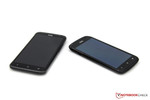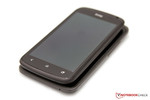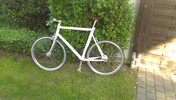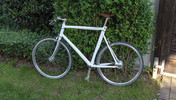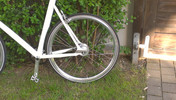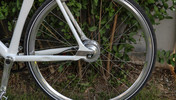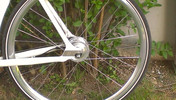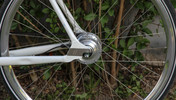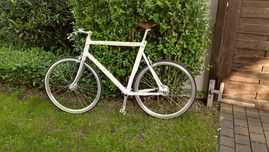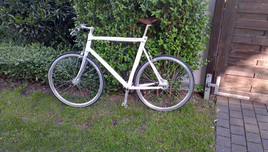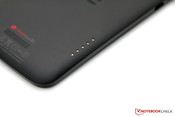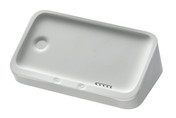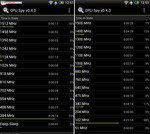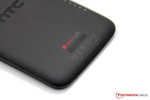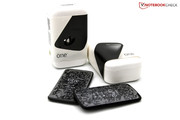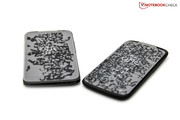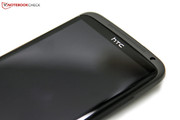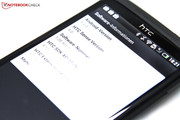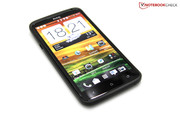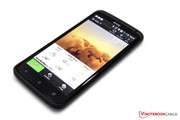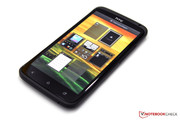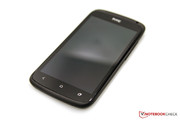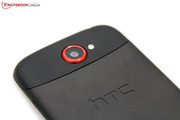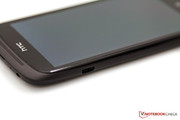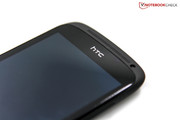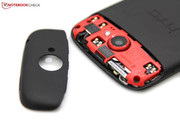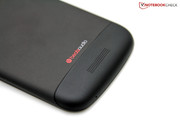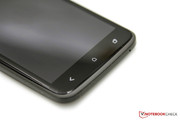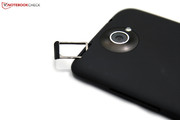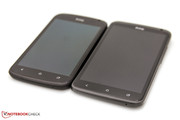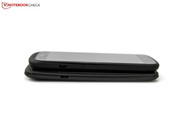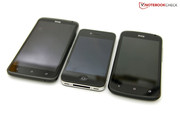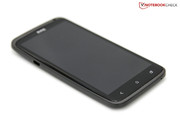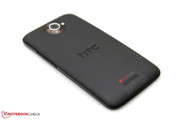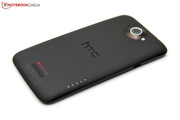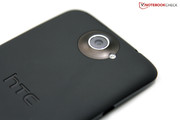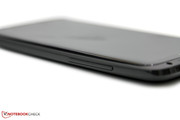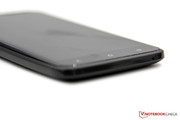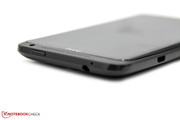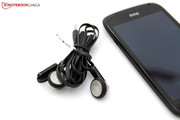Review HTC One S vs. HTC One X (Tegra 3) Smartphone

At the 2012 Mobile World Congress in Barcelona, manufacturers presented the latest advances in the field of mobile technology. Amongst highlights of the Mobile World Congress were the latest phones featuring the Android 4.0.3 operating system, codenamed Ice Cream Sandwich (ICS). Taiwanese manufacturer HTC presented its new “One” series of mobile phones featuring the HTC-customized Android 4.0. This series consists of three models – the entry-level HTC One V, the upper-middle class HTC One S, and the top-of-the-line HTC One X codenamed “EndeavorU”.
The HTC One S features a 1.5 GHz Qualcomm dual-core Snapdragon S4 system-on-a-chip (SoC), 16 GB of internal memory, and a 4.3 inch 960x540 qHD screen. The larger, higher-end HTC One X is equipped with a 1.5 GHz Nvidia Tegra 3 quad-core SoC, 32 GB of memory, and a 4.7 inch 720p screen. In this review, we will compare the functionalities, qualities, materials, and prices of these two models. HTC’s manufacturer’s suggested retail price (MSRP) for these two phones are 499 Euro ($630 USD) and 599 Euro ($750 USD) for the HTC One S and HTC One X respectively.
At the heart of our comparison is one simple question – are the bells and whistles of the more expensive One X necessary or does the One S suffice for everyday use?
Case
At first glance, the two smartphones look surprisingly similar. There are a few small differences, such as the more angular look and shiny border of the One X. The power button on the One X had to be placed higher due to the positioning of the SIM card slot. A right-handed user with smaller hands may find it difficult to reach the power button while holding the One X, a problem that is not present in the smaller One S. This is a prime example of the effects of even small size differences in everyday use.
Neither device shows visible screws or flaps as HTC chose to use a unibody case design for the HTC One series. This design has a significant advantage in terms of sturdiness and a very resistant chassis. The cases for these models are also very aesthetically pleasing due to their unibody design. The filed slots for the ports, microphone, and speakers are a nice touch and fit well with the design as they do not require additional connectors for use.
On the other hand, the closed design makes swapping out a drained battery or replacing the back cover in case of damage impossible. As well, the protruding spherical camera lens on both devices seems to be either a serious design flaw – as the protrusion invites scratches to the lens – or a marketing gimmick to encourage the buyer to buy the available hard-shell cover from HTC for 20 Euros ($25 USD).
The One S is a very slim model, measuring a sleek 7.8 mm thick (0.31 inches). This makes the One S one of the thinnest smartphones available on the market. The One X is hardly unwieldy with a slightly higher 8.9 mm thickness (0.35 inches). Both models also feature a rough case surface to give the devices a tactile, ergonomic feel. The One S features an aluminum case while the One X uses a polycarbonate one. In our subjective analysis, we found that the only difference was that the One S had a colder back than its big brother, the One X.
Both the HTC One S and the HTC One X are quite light with weights of 119 and 134 grams (4.2 and 4.7 ounces) respectively. By comparison, the Apple iPhone 4 is heavier than both with a weight of 140 grams (4.9 ounces). This is one area where HTC has made great progress as the HTC One X is much lighter than its predecessor, the HTC Sensation XL, which weighed 21.6% more at 163 grams (5.7 ounces).
Connectivity
Both models feature connectivity options that are typical of modern smartphones – 3.5 mm headphones jack, a volume rocker, and a Micro-USB 2.0 interface for transferring data and charging the phone. In both our test models, the volume rocker had a comfortable pressure point. The Micro-USB interface supports the HDMI via Mobile High-Definition Link (MHL) protocol established by the Digital Living Network Alliance (DLNA) which allows the user to transfer videos to their TV or monitor. Unfortunately the required cable is not included with the phone and must be purchased separately.
We found that both models had room for improvement in the connectivity category. We would have liked to see a microSD card slot, available in many phones including the Galaxy S3. Expandable storage options such as an external card slot are almost a requirement in the current marketplace due to users‘ ever-growing collections of media, desire to photograph and videograph, and expanding demand for apps. Instead, the HTC One S is limited to a mere 16 GB, of which only 12.1 GB is available, and the HTC One X is limited to a marginally better 32 GB, of which only 26.3 GB is available. Clearly HTC acknowledged this issue as it offers free cloud storage for both models – 25 GB of online storage for 24 months via the cloud service Dropbox. New accounts can be created and existing accounts can be used in this offer.
Communication
Both smartphones feature extensive communication modules featuring Wi-Fi. The One S supports 802.11b/g/n while the One X also features 802.11a. Both models support Bluetooth 4.0 and native apt-X allowing for the wireless tranmission of high-quality, lossless audio content. As well, both models feature quad-band support for the four main GSM frequencies – 850, 900, 1800, and 1900 MHz – making them compatible with most networks across the world.
Naturally, both phones support the latest High Speed Packet Access (HSPA+) standard and provide mobile Internet capable of speeds of up to 21 MB/s. The next generation of mobile Internet, the Long Term Evolution (LTE) standard, is not available for either of these HTC One models though this may be of little to most users as LTE coverage is still limited and relatively high-priced. In the United States, an LTE-ready version of the HTC One X is available from AT&T but this version uses the same Qualcomm Snapdragon found in the One S instead of the Nvidia Tegra 3.
The HTC One X fulfills its premium status and provides users with the Near Field Communication (NFC) standard allowing the wireless transmission of contact details, open webpages, and other data between two NFC-compatible devices by placing them in close proximity. One application of NFC technology is Android Beam which allows two Android smartphones with NFC chips to share data. It has been proposed that in the near future, shoppers will be able to make purchases using NFC-compliant smartphones instead of credit cards.
Software
For the One series, HTC has chosen the latest version of the Google’s operating system, Android 4.0.3 codenamed Ice Cream Sandwich (ICS). As is typical for HTC, the One series uses a modified user interface known as HTC Sense UI 4.0 instead of the standard Google Android interface. Many users will find Sense UI appealing as it allows the user to easily customize the phone and users are treated to a large variety of options with up to seven home screens and various widgets which allow for device personalization. Additional information about Sense UI can be found at the HTC Sense homepage.
Camera
Both phones feature the same rear-facing camera, capable of 8 MP pictures and Full HD video. This camera features a back-illuminated sensor (BSI) and 28 mm optics, working with a fixed shutter of 1:2.0 and an integrated LED flash. The camera is capable of a maximum picture resolution of 3264x1840 in the 16:9 aspect ratio. The camera is capable of recording video at 30 frames per second (fps) at 1920x1080 (Full HD). Sadly, the phones remain unable to play such high-resolution, high-speed video well.
HTC has also included a chip that makes it possible to take rapid, sequential pictures at a rate of up to 4 pictures per second, a feature that is often limited to digital SLR cameras. This feature can be used while recording video as well. These features are combined with the high-quality lens into a package known as “HTC Image Sense”. HTC has been heavily promoting this package and touting its features of image stabilization (IS) while recording video, multiple picture editing methods, and various capture modes – Automatic, HDR, Panorama, and Portrait.
To test the quality of the camera, we used the cameras of both the One S and the One X and compared the results to that of the 18 MP Canon EOS 60D digital SLR camera. Picture sharpness was decent and the color quality seemed much livelier on the smartphone screens as compared to the LCD from the Canon EOS. The HTC One S seemed to offer pictures with a bit of overexposure, leading to higher-than-expected brightness. While the digital zoom feature was nice, the lack of an articulated lens causes the purely digital zoom feature to reduce image quality quickly. This is a limitation that does not exist in standalone cameras. However, quick snapshots that do not require zoom should not be a problem for either of these phones. The integrated flash and BSI sensor make night time video and photography possible. Compared to the Apple iPhone 4, the HTC One series phones have better cameras.
While the two phones have the same rear-facing camera, they employ different front-facing cameras. The HTC One S has a 640x480 (VGA) camera while the One X features a 1280x720 (720p) front camera. Both cameras support video at 25 fps and are good enough for video calls. We liked the front camera of the One X more due to the sharper picture.
Accessories
Both HTC phones come in plain, environmentally-friendly packaging which includes the phone, a modular USB power adapter, a USB data cable, a few manuals, and a simple flat-cabled stereo headset. Unlike the previous generation, HTC no longer includes a Beats Audio headset with the phones due to pricing reasons. We found the overall accessory package to be acceptable but unexceptional for this price range. A cover, holster, or case for the phones must be purchased separately, if desired.
The back of the HTC One X has five small points for connecting to the ”CR S650“ docking station that serves as an external speaker system and allows the phone to be charged while in use. The CR S650 is available from HTC’s accessory store for around 60 Euro ($75 USD) plus shipping.
Warranty
HTC provides a 24 month warranty on the phones and a 12 month warranty on the included accessories. Warranty service is performed by the store where the phone was purchased. The HTC Online Shop does not offer warranty extensions.
Input Devices
Both phones feature a capacitive touch screen that allows for text-entry and navigation. The screens react precisely to touch and multi-finger gestures, such as pinch-to-zoom (two-finger zoom) and tap-to-zoom (double-tap zoom), are supported.
For input, the Sense UI uses a virtual keyboard that may be displayed automatically or fade in upon request, depending on the application. The keyboard features a layout that may seem a bit crowded at first glance but becomes manageable after a bit of practice. Typing in URLs and SMS messages can be done quickly after one becomes familiar with the keyboard’s layout. We did not like the placement of the Enter key which was placed too far down and could easily be confused with the backspace. Various tools are available from the Google Play Store that can assist with typing and native Bluetooth support allows one to use an external keyboard should such be desired.
Sense UI includes the standard three touch buttons (Back, Home, and Recent Apps) as well as the HTC-specific fourth button which allows the user to configure a program’s settings. This button blends in as a small bar for compatible programs.
Display
The two models differ in both screen size and screen resolution. The HTC One S features a 960x540 qHD 4.3 inch PenTile AMOLED screen while the HTC One X features the SLCD2 1280x720 720p 4.7 inch screen. Both screens use the 16:9 aspect ratio.
The One S’s 4.3 inch screen features a good 256 dots per inch (DPI) and individual pixels are quite small and difficult to see. Compared to both the One X and the iPhone 4, however, these pixels are considerably more noticeable. Due to its PenTile technology, the screen does not employ the standard red, green, and blue (RGB) palette but instead uses a one-to-one mapping of green and a subsampling of red and blue to provide a higher pixel density and reduce the manufacturing costs. The HTC One X features a higher 312 DPI and its higher resolution allows it to natively play HD 720p video. The screen is essentially an IPS panel. Both screens are protected by a 2.5 mm (0.1 inch) layer of Corning’s Gorilla Glass. This surface makes both smartphone displays extremely durable.
To compare the screens, we first measured brightness and contrast. We observed the One S to have a brightness of 306 cd/m² in the upper third of its screen, an average brightness of 296 cd/m², and a low black value of 0.04 cd/m². This combination of brightness and black value, qualities of the AMOLED screen, corresponds to an extremely high contrast value of 7350:1. The One X was observed to be even brighter with a maximum brightness of 464 cd/m², an average brightness of 448 cd/m², and a slightly higher black value of 0.36 cd/m². The contrast ratio of 1225:1 is behind that of the One S but is still quite high.
| |||||||||||||||||||||||||
Brightness Distribution: 95 %
Center on Battery: 294 cd/m²
Contrast: 7350:1 (Black: 0.04 cd/m²)
| |||||||||||||||||||||||||
Brightness Distribution: 93 %
Center on Battery: 441 cd/m²
Contrast: 1225:1 (Black: 0.36 cd/m²)
These brightnesses and high contrasts proved to be very helpful in outdoor use. Both phones could comfortably be used on-the-go even though the shiny, reflective glass screens occasionally caused strong reflections. A matte display cover is recommended, especially during summer use. Comparing the two models, the better brightness of the HTC One X is not subjectively noticeable.
The viewing angles of both displays were great and we did not observe any significant differences between the AMOLED and the SLCD2 IPS. Both displays were clear even when the phones were viewed at flat angles. Lesser displays are often plagued by distortions such as color inversion or reduced brightness.
Our subjective impressions of the displayed colors, contrast, and picture sharpness for both phones were good. Both phones also feature a brightness sensor which can adjust the screens according to available light and can prove to be a power saving feature in some contexts. This feature can be configured in system settings.
Performance
Both phones feature system-on-a-chip (SoC) architecture. In this section, we compare the qualities of both the HTC One S and the HTC One X.
The HTC One S is equipped with a Qualcomm Snapdragon S4 (MSM8260A) dual-core SoC which features a 28 nm fabrication process, Krait CPU architecture, a 1 MB L2 cache, and an integrated Adreno 225 GPU – a close relative of the Adreno 220 used in the Snapdragon S3. Using the CPU Spy tool, we observed that the Snapdragon S4 SoC usually runs at either 1.5 GHz or 384 MHz. The Adreno 225 supports Direct3D 9_3 and can operate at speeds up to 400 MHz, a significant upgrade from the previous generation’s Adreno 220 GPU which had a maximum operating speed of 266 MHz.
The HTC One X is equipped with the new Nvidia Tegra 3 SoC, codenamed Kal-El, featuring a 40 nm fabrication process. The Tegra employs an ARM Cortex-A9 quad-core CPU with each core operating at a maximum speed of 1.4 GHz. In single-core operation, the Cortex-A9 operates at up to 1.5 GHz. CPU Spy shows that the SoC usually runs at 1.4 GHz or 100 MHz. The Tegra 3 features an improved Nvidia GeForce ULP GPU which was already tested in the review of the Asus Eee Pad Transformer Prime TF201. Interestingly, the Tegra 3 also operates a fifth "Companion" core, a low power core which runs at 500 MHz and only activates at low system load or when the system is idle. This design allows the system to operate on the more powerful quad-core architecture during load and on the more energy-efficient companion core during times when high performance is unnecessary. The end result is lower power consumption during overall use.
Both options use Android 4.0.3 ICS, HTC Sense UI 4.0, and 1 GB RAM. While HTC did not publish the specific RAM speeds, we do know that the Tegra can supports DDR3-L at up to 1600 MHz and the Snapdragon can support the well-known LPDDR2-RAM at up to 500 MHz.
To further test the phones, we ran various Android benchmarks. In most benchmarks, the devices had similar performances. In Google V8, the performances showed a 1% difference. In other tests, one phone outperformed the other phone or vice versa. For example, the HTC One S had a 30% advantage in the multi-thread Linpack test. In Smartbench 2012, the HTC One X had a score of 4,679 representing a 36% increase over ther HTC One S in the productivity test while the One S had a 24% lead over its big brother One X in the gaming index test.
| Google V8 Ver. 6 - --- (sort by value) | |
| HTC One S | |
| HTC One X | |
| Asus Eee Pad Transformer Prime TF201 | |
| Sunspider - 0.9.1 Total Score (sort by value) | |
| HTC One S | |
| HTC One X | |
| Asus Eee Pad Transformer Prime TF201 | |
* ... smaller is better
| Browsermark 1.0 - --- (sort by value) | |
| HTC One S | |
| HTC One X | |
| Asus Eee Pad Transformer Prime TF201 | |
| Linpack Android / IOS - Multi Thread (sort by value) | |
| HTC One S | |
| HTC One X | |
| Asus Eee Pad Transformer Prime TF201 | |
| Smartbench 2012 | |
| Productivity Index (sort by value) | |
| HTC One S | |
| HTC One X | |
| Asus Eee Pad Transformer Prime TF201 | |
| Gaming Index (sort by value) | |
| HTC One S | |
| HTC One X | |
| Asus Eee Pad Transformer Prime TF201 | |
In the GPU Benchmark tests NenaMark 2 and BaseMark ES 2.0 (Taiji Free), the Snapdragon S4 proved to be superior. The HTC One S reached 60.2 and 49.1 fps respectively compared to the HTC One X only reaching 47.5 and 18.4 fps respectively. These scores correlate to performance gains of 27% and 167% for the HTC One S.
We used GL Benchmark version 2.1 to further examine the performance points of the two models. This tool allowed us to test various settings and speeds of the graphical hardware of the smartphones. The Egypt and Pro tests were especially interesting.
The Egypt sub-test simulates gaming performance. The standard test runs at the native resolution of the screen, making the results of the two smartphones incomparable due to their different resolutions. In Egypt Offscreen video was rendered at 720p (1280 x 720 pixel) regardless of the actual screen resolution. In the normal test, the HTC One S remained ahead of the HTC One X with a score of 59 fps. In the Offscreen benchmark, the X took the lead and scores 64 fps, a lead of 12%.
In the Pro benchmark, OpenGL overall performance, as well as the performance of the pipelines and shaders, was tested. In this benchmark, the HTC One S performed admirably and scored 9 more points than the HTC One X, a 4% advantage.
| Basemark ES 2.0 - Taiji Free (sort by value) | |
| HTC One S | |
| HTC One X | |
| Asus Eee Pad Transformer Prime TF201 | |
| GLBenchmark 2.1 | |
| Pro (sort by value) | |
| HTC One S | |
| HTC One X | |
| Asus Eee Pad Transformer Prime TF201 | |
| Pro Offscreen (720p) (sort by value) | |
| HTC One S | |
| HTC One X | |
| Asus Eee Pad Transformer Prime TF201 | |
| Egypt (sort by value) | |
| HTC One S | |
| HTC One X | |
| Asus Eee Pad Transformer Prime TF201 | |
| Egypt Offscreen (720p) (sort by value) | |
| HTC One S | |
| HTC One X | |
| Asus Eee Pad Transformer Prime TF201 | |
In summary, both smartphones performed well and differences in performance were minor and limited to specific scenarios. If one intends to focus on 3D gaming, the One X is the better option as Nvidia has specifically optimized its Tegra 3 SoC to handle gaming. This is clearly demonstrated in the shooter Shadowgun, available through the Google Play Store, in which the Tegra 3 performs better than other SoC’s. Addtional 3D-optimized games can be found in the Google Play Store or via an app called Tegra Zone. The latter is specifically designed to access and download games custom-made for the Tegra family of SoC’s.
Having said this, we should also clearly state that typical applications and more basic games such as Angry Birds or Cut the Rope are trivial for the HTC One S. We were unable to notice a difference in the subjective comparison of the two phones and both ran well and loaded applications quickly.
Emissions
Temperature Emissions
Both smartphones, as with virtually all mobility devices, are passively cooled. While idle or under low load, both phones were lukewarm with temperatures in the range of 30 to 32 Celcius (86 to 90 Fahrenheit) although the aluminum unibody case of the HTC One S felt subjectively cooler. Overall, both devices had temperatures in the blue region of the below graphs while idle and we found these temperatures to be appropriate for this scenario.
To test the two smartphones under load, we ran the StabilityTest program at maximum brightness and with Wi-Fi enabled. In this scenario, the temperatures rose noticeably and the cases heated up palpably. The back of the smaller HTC One S reached a high of 39 Celcius (102 Fahrenheit). Subjectively, we found this level to be acceptable and even holding the phone for longer periods of time remained comfortable. By comparison, the glass surface of the Apple iPhone 4 heats up more under load and becomes unpleasant to hold for too long.
On the other hand, the HTC One X heated up considerably more. This model reached a maximum of 52.8 Celcius (127.0 Fahrenheit), a tangibly hot temperature. This 13.3 Celcius (25 Fahrenheit) temperature difference caused the phone to become uncomfortable to manage for longer periods of time while under load. It should be stated that very few applications will load the HTC One X as heavily as our test scenario. While playing games, the One X did become warmer but, subjectively, it never reached its maximum temperature as determined in our test.
(+) The maximum temperature on the upper side is 37 °C / 99 F, compared to the average of 35.2 °C / 95 F, ranging from 21.9 to 247 °C for the class Smartphone.
(+) The bottom heats up to a maximum of 39.5 °C / 103 F, compared to the average of 34 °C / 93 F
(+) In idle usage, the average temperature for the upper side is 29.9 °C / 86 F, compared to the device average of 32.9 °C / 91 F.
(-) The maximum temperature on the upper side is 47.6 °C / 118 F, compared to the average of 35.2 °C / 95 F, ranging from 21.9 to 247 °C for the class Smartphone.
(-) The bottom heats up to a maximum of 52.8 °C / 127 F, compared to the average of 34 °C / 93 F
(+) In idle usage, the average temperature for the upper side is 29.8 °C / 86 F, compared to the device average of 32.9 °C / 91 F.
Speakers
Each HTC phone has a single, integrated Beats Audio speaker on the back of each smartphone. While the sound quality was hardly amazing, it was quite good compared to the cheaper speakers found on most other phones. The maximum volume was high and proved to be an advantgae. High frequencies were present but not overwhelming. Middle and low tones and bass were minimal at best. As a result, even this high-quality speaker solution did not offer a well-rounded auditory experience.
The stereo headset included with both phones could be easily connected to the phone via the 3.5 mm audio jack. The sound quality was similar to the built-in speaker and also lacked low tones and bass. We believe this headset was designed for receiving phone calls as opposed to enjoying music. This belief is further supported by the call button found on the right headphone cable. This button is recognized by many Android music player apps. We would have instead preferred to have a Beats Audio headset included in the package as was the case in the previous generation’s HTC Sensation XL.
Battery Life
Power Consumption
In performance tests, both smartphones had similar results. Interestingly, the power consumptions of the two phones were also comparable. The Tegra 3’s ”Companion“ core raised the quad-core SoC’s efficiency to similar levels to that of the Qualcomm dual-core processor. In our test, the One S consumed between 0.6 and 1.8 Watts while idle. The One X consumed up to 1.5 Watts and was even more efficient on-the-go. We considered this a victory for the HTC One X.
Under load, power consumptions rose expectedly. While running StabilityTest, under the conditions mentioned in the Performance section (maximum brightness, active Wi-Fi), the HTC One X consumed a maximum of 5.8 Watts, a 45% consumption increase compared to the smaller One S that consumed a mere 3.2 Watts. Full HD 1080p video playback required 2.2 Watts for the HTC One S and 2.6 Watts for the HTC One X. Clearly the One X consumes more power but compensates with a larger Lithium-Power battery featuring a capacity of 1800 mAH compared to the 1650 mAH battery of the One S.
| Off / Standby | |
| Idle | |
| Load |
|
Key:
min: | |
| Off / Standby | |
| Idle | |
| Load |
|
Key:
min: | |
Battery Life
Most users will be imlikely to continuously use their phones for its entire battery life in everyday use. At some point in normal use, the power-saving standby mode will activate and reduce power consumption to 0.2 Watts for the HTC One S and 0.4 Watts for the HTC One X. The frequency at which standby mode activates may vary from user to user but this power-saving mode will nonetheless extend runtimes for both phones regardless of each individual’s particular habits. To give readers an idea of the runtimes of the devices, we observed both phones in three scenarios – fully idle, a modest usage profile, and the worst case scenario.
While idle (minimum brightness, WLAN off), both smartphones had a battery life of 17 to 19 hours. Despite the larger battery, the powerful hardware of the HTC One X resulted in a shorter run time.
The "Surfing with Wi-Fi" test represents a realistic measure of the maximum and minimum run times. This test was performed at the standard 150 cd/m² -- 50% in both phones‘ system settings -- and with Wi-Fi on. The runtimes dropped to 9 hours and 40 minutes for the HTC One S and 8 hours and 56 minutes for the HTC One X, a difference of 7.6%.
To determine the worst case battery runtime, we used the StabilityTest benchmark to stress all cores and the GPU for both the Tegra 3-based HTC One X and the Snapdragon S4-based HTC One S. In both devices, the Wi-Fi module was activated and the display was set to maximum brightness. In this test, the HTC One S ran for 2 hours and 29 minutes. The HTC One X only lasted 2 hours.
Verdict
While our various tests showed specific advantages for one device or another, there was no clear winner between the HTC One S and the HTC One X. Both phones feature attractive designs, solid workmanship, and an impressive feel. Both devices use the latest Google operating system, Android 4.0.3 Ice Cream Sandwich, with the HTC-customized Sense UI 4.0. Both smartphones have an 8 MP main camera, built-in LED flash, and the HTC Image Sense package based on HTC’s proprietary camera chip. Similarly, both phones suffer from the protruding lens and both lack a card reader. HTC offers 25 GB of DropBox storage for both phones as well.
We found that the smaller HTC One S offers a better overall package for most users. The Qualcomm Snapdragon S4 dual-core processor offers more than enough performance for applications and games. The lower price point and slim aluminum unibody are additional advantages of the HTC One S over its larger brother.
On the other hand, the editor would pick the high-end HTC One X due to its more advantage technology. The Nvidia Tegra 3 quad-core SoC is especially powerful in games optimized for the Tegra package. Furthermore, the One X features a better display, a 1280x720 IPS panel. Other advantages include a larger capacity, a larger 4.7 inch screen, a docking interface, and a Near Field Communication (NFC) chip. While the performance gains from the quad-core CPU are not noticeable and automatic point of sale transactions using NFC technology are not widespread, the One X’s features allow for some degree of future-proofing.
We are curious to see how the HTC One series will compare to the next high-profile Android phone, the Samsung Galaxy S3. The Galaxy S3 will be available on the May 29, 2012.




